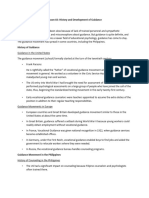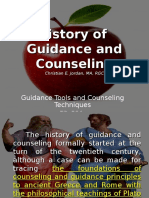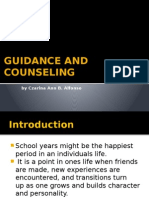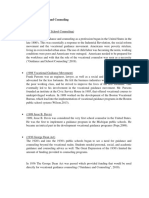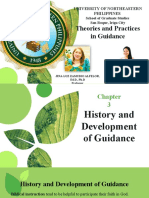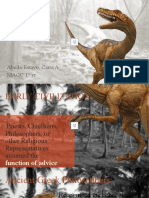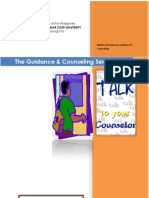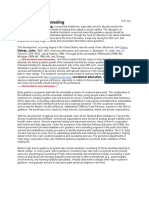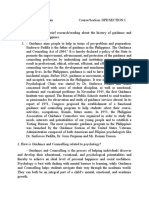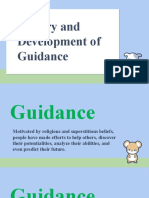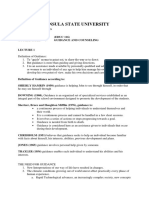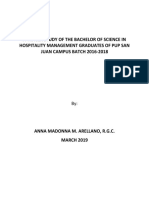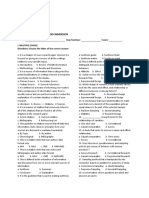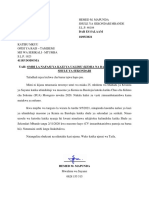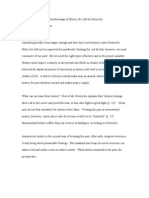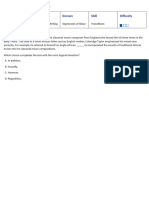0% found this document useful (0 votes)
95 views15 pagesHistory and Development of Guidance
The document outlines the history and development of guidance and counseling in education, beginning in the 1890s with social reform movements in the U.S. and highlighting key figures and legislation that shaped the field, such as Jesse B. Davis and the National Defense Education Act. It also discusses the evolution of guidance in the Philippines, including the establishment of the Guidance Institute and the professionalization of counseling through Republic Acts 9258 and 11036. Additionally, it compares school counseling practices in various countries, emphasizing the diverse approaches to vocational and personal guidance.
Uploaded by
MsDonna ArellanoCopyright
© © All Rights Reserved
We take content rights seriously. If you suspect this is your content, claim it here.
Available Formats
Download as PPTX, PDF, TXT or read online on Scribd
0% found this document useful (0 votes)
95 views15 pagesHistory and Development of Guidance
The document outlines the history and development of guidance and counseling in education, beginning in the 1890s with social reform movements in the U.S. and highlighting key figures and legislation that shaped the field, such as Jesse B. Davis and the National Defense Education Act. It also discusses the evolution of guidance in the Philippines, including the establishment of the Guidance Institute and the professionalization of counseling through Republic Acts 9258 and 11036. Additionally, it compares school counseling practices in various countries, emphasizing the diverse approaches to vocational and personal guidance.
Uploaded by
MsDonna ArellanoCopyright
© © All Rights Reserved
We take content rights seriously. If you suspect this is your content, claim it here.
Available Formats
Download as PPTX, PDF, TXT or read online on Scribd
/ 15
